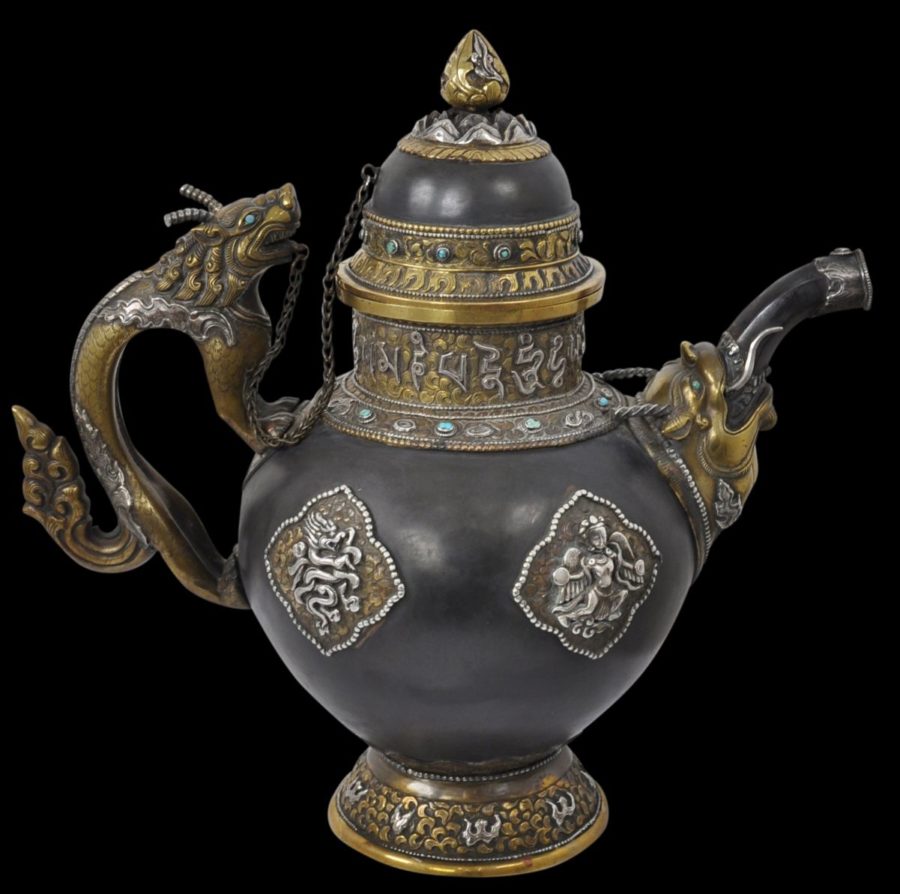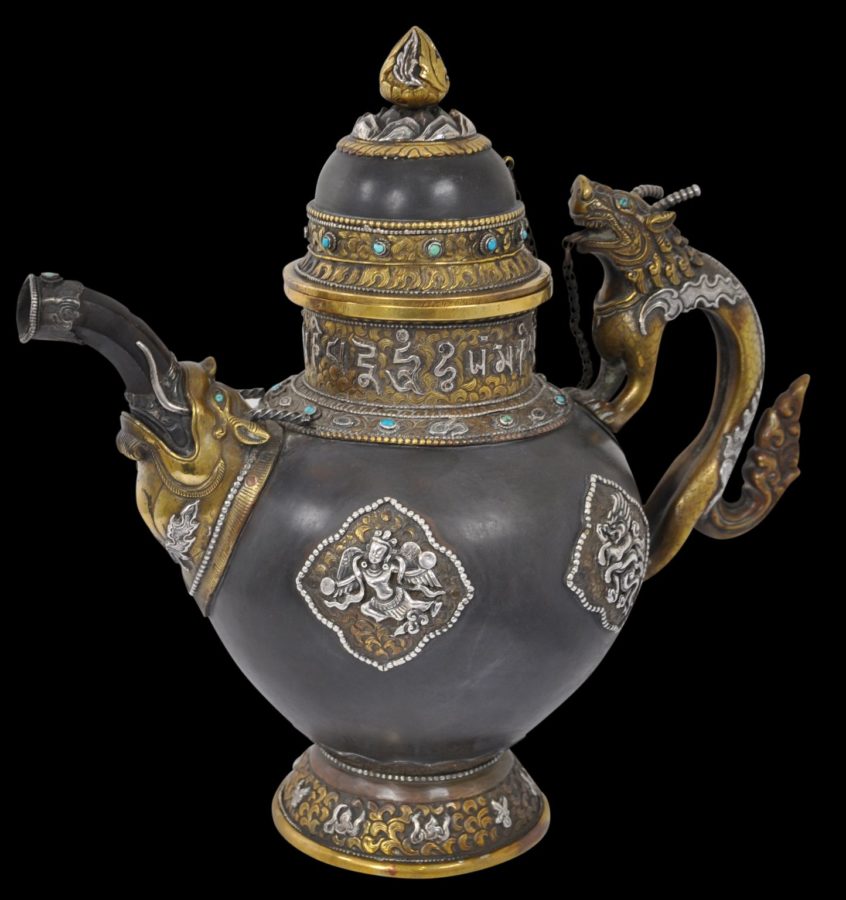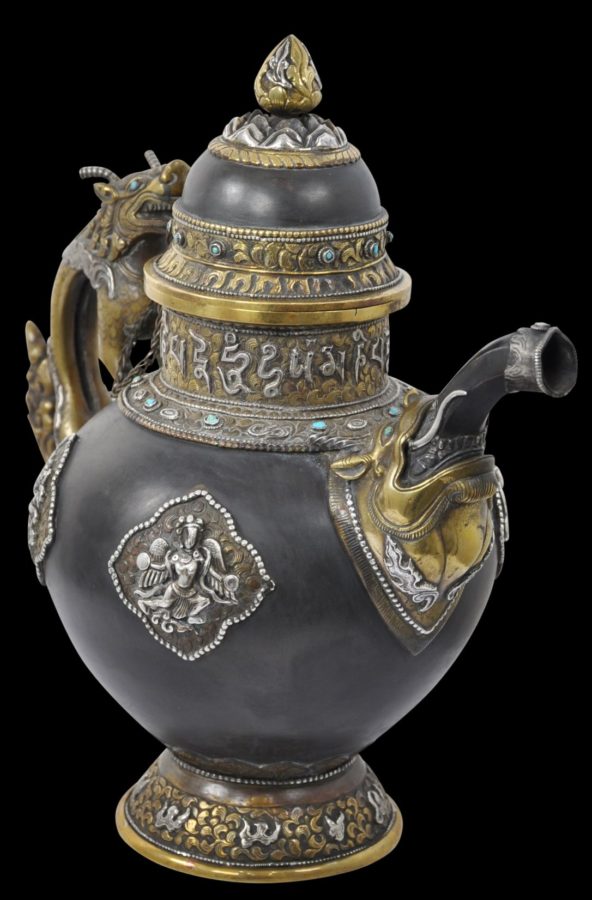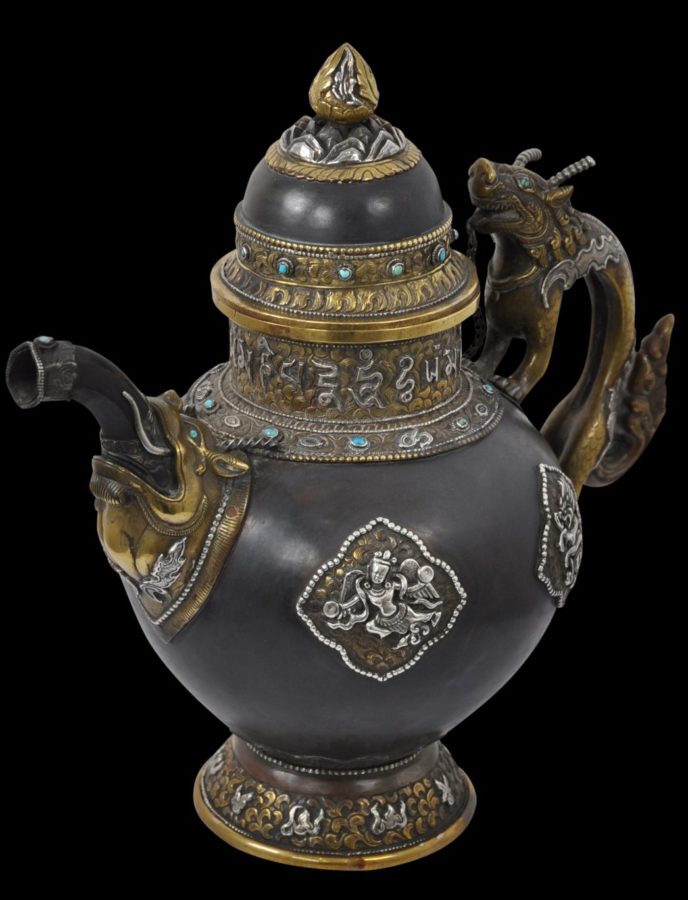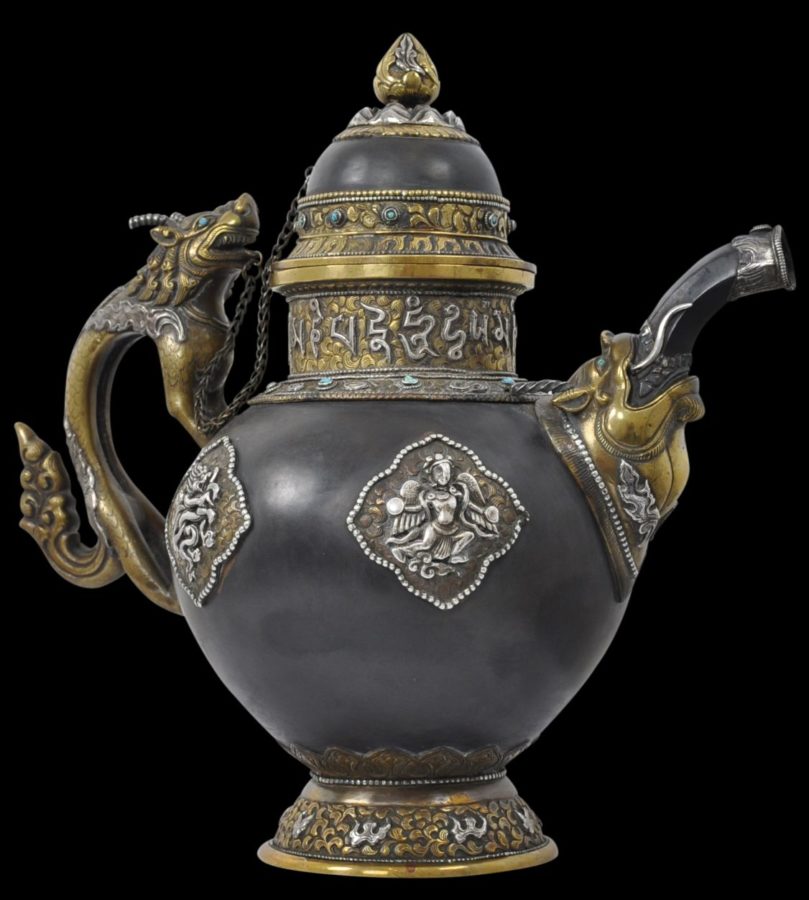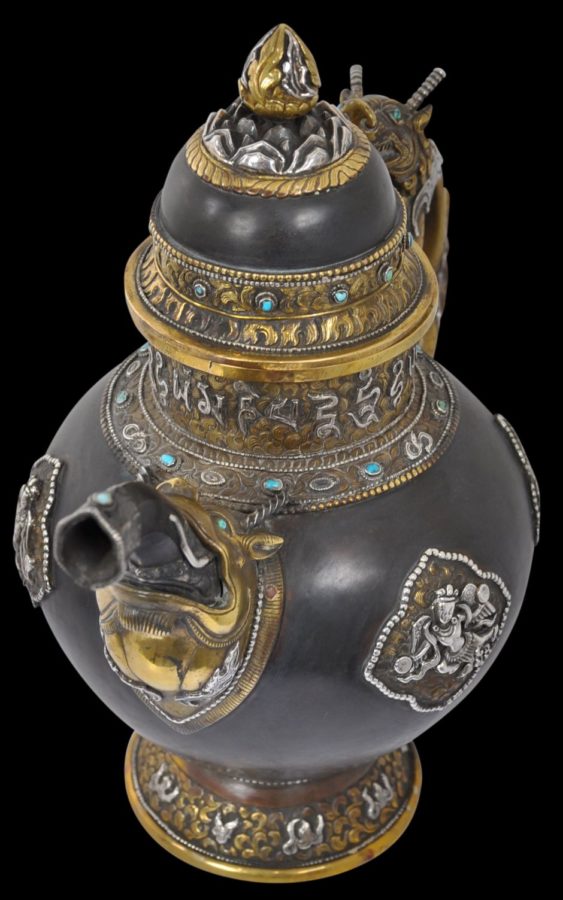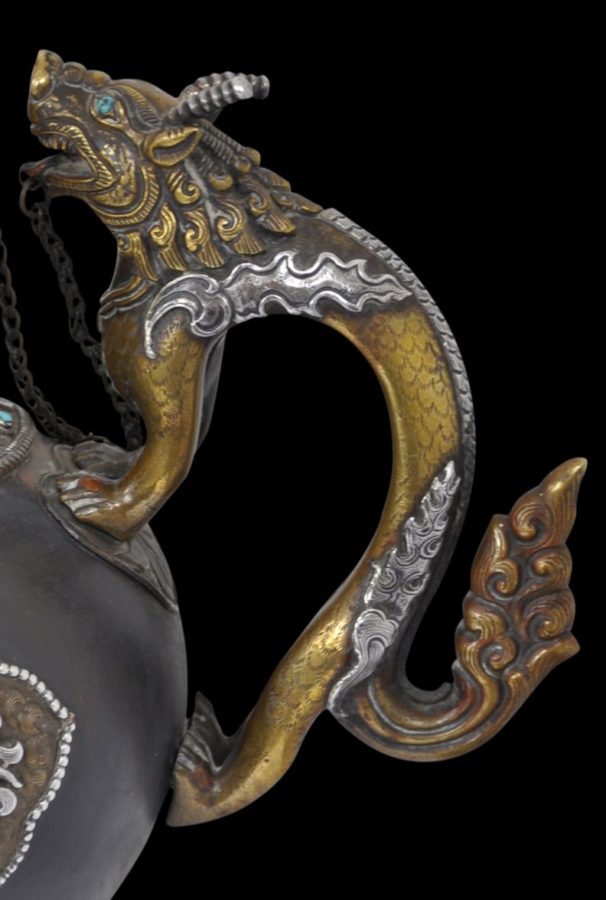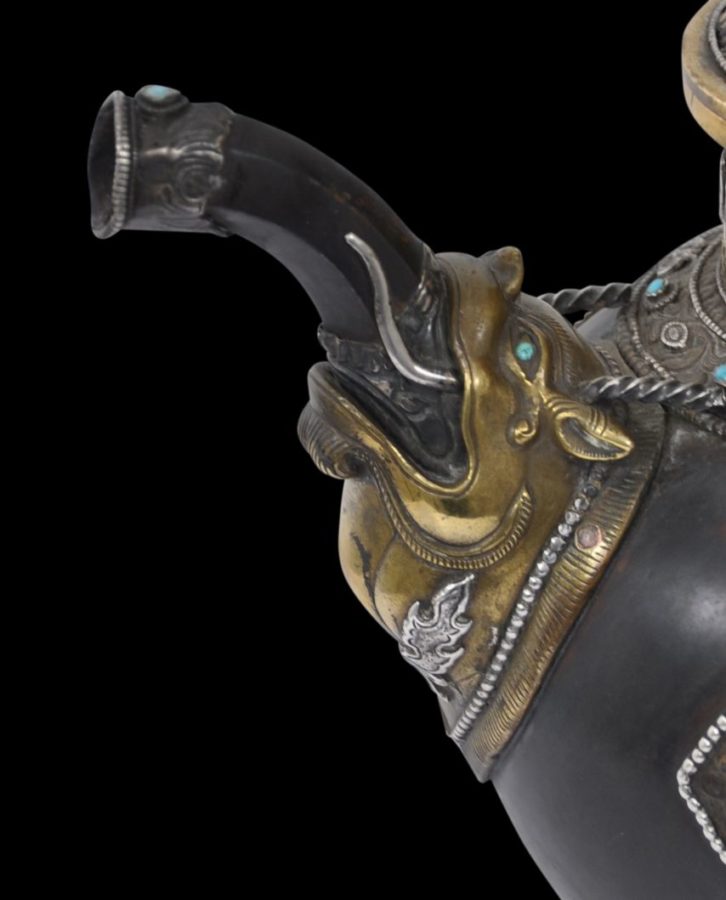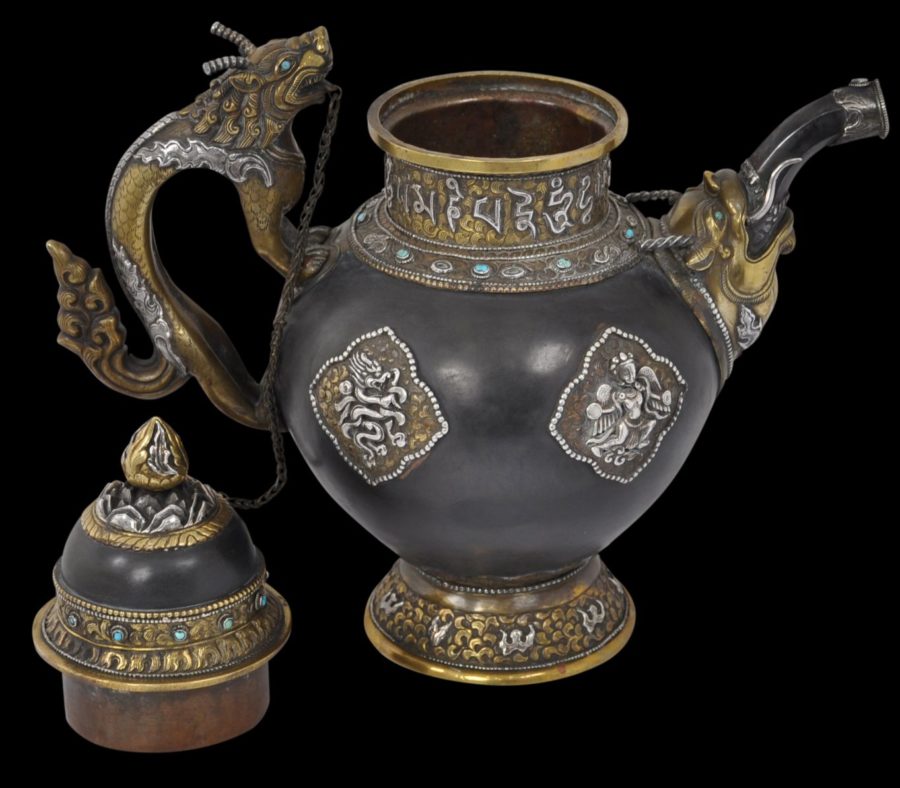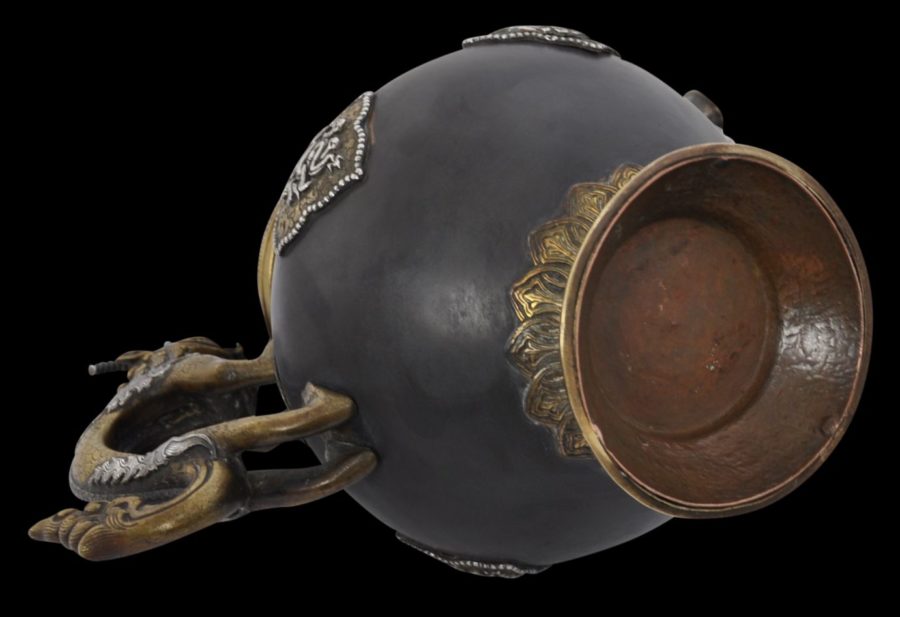This very fine and intricate teapot or ewer is from either Tibet or Nepal and dates to around or before 1880. Most likely of Newar craftsmanship, most probably it was intended for the Tibetan market and was made either by Newar craftsmen in Nepal or Tibet itself. An engraving of an almost identical teapot is published in Birdwood (1880, plate 29).
The teapot comprises a heavy, spherical copper body to which four parcel-gilt silver plaques repoussed with garudas and dragons have been fixed. The gilded (gold-plated) flared copper foot, is chased with Himalayan scrolling and fixed with ‘flaming’ silver plaques.
The faceted copper spout emerged from a gilded makara head with silver embellishments, including silver horns and whiskers,and turquoise cabochons. The end of the spout is wrapped in silver that has been engraved and which is topped by a turquoise cabochon in a pearled silver wire box setting.
The shoulder of the base is of chased, gilded copper, set with nine turquoise cabochons and silver plaques. Above this is a gilded, chased collar set with a fine and dense row of u-chen script, all in silver.
The high-domed lid is set with a fine, chased, bud-like silver finial, with gilded, chased borders set with pearled silver wire and turquoise cabochons.
The handle is in the form of a gilded Himalayan feline creature with silver mounts, including silver horns, and turquoise cabochons for eyes. A chain connects its mouth with the lid.
The item is in excellent condition with no losses. The lid fits tightly. At more than two kilograms, it is also surprisingly heavy in the hand.
Overall, it is a magnificent, sculptural and highly decorative piece.
References
Birdwood, G., The Industrial Arts of India, 1880.


